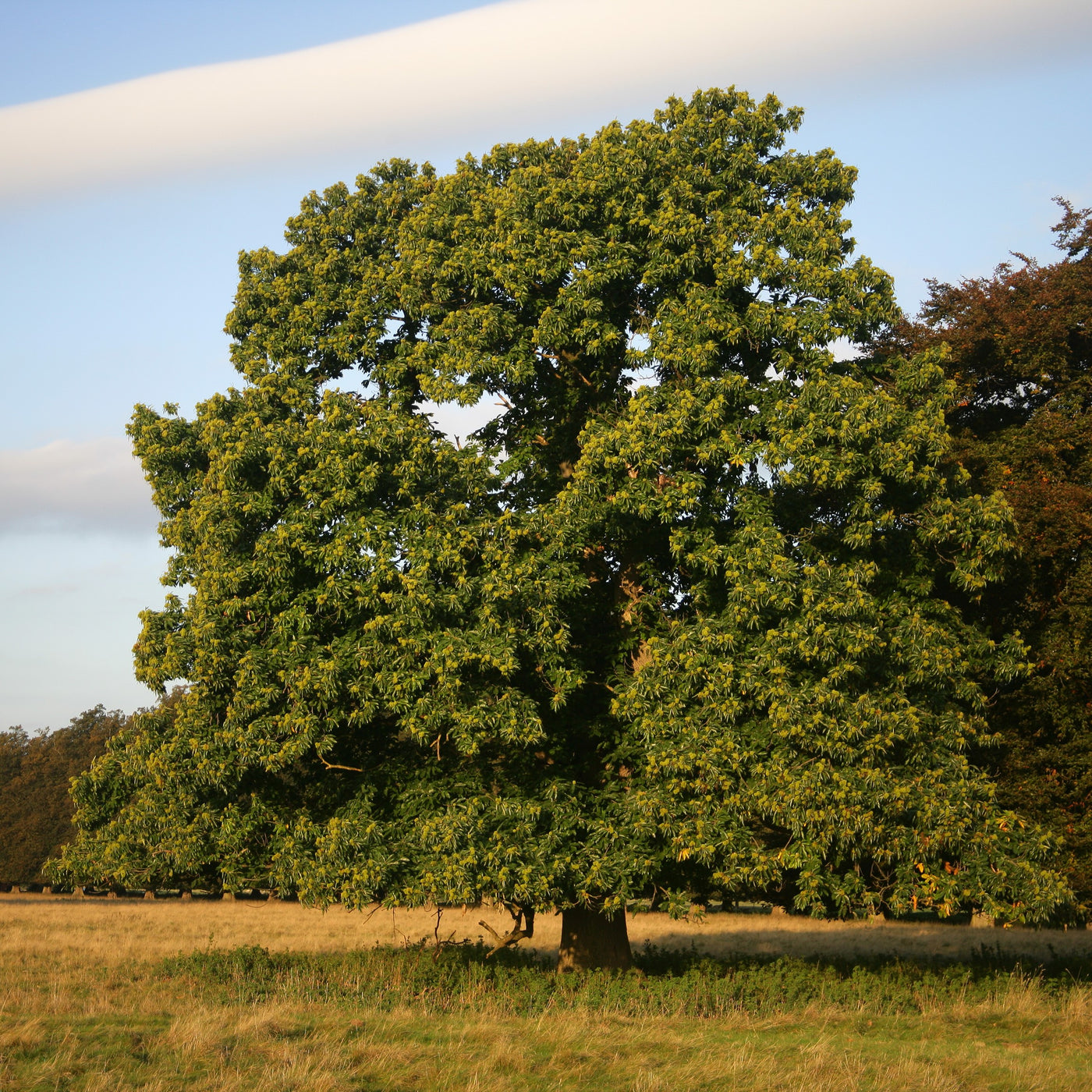The Remarkable Chestnut Oak Tree
The Quercus montana (Chestnut Oak Tree) stands as a long-standing symbol of durability and extended life. The tree has served as a cornerstone element in both human development and ecological patterns by influencing forest ecosystems and affecting human life through its various uses. Native American tribes of North America understood this tree's value first and took advantage of its properties for sustenance and medicinal purposes and constructed shelters from it. People valued this resilient wood for constructing housing while also using it to create tools and weapons. European settlers learned about its strength and used it to construct ships and furniture while extracting tannin for leather production. As a fundamental element of Appalachian forests, this species has demonstrated both stability and an enduring presence throughout changing environmental conditions.
Chestnut Oak Tree Is A Tree of Healing
Traditional medicine practitioners have used Quercus Montana for centuries. Indigenous healers produced effective astringents from its bark because of its high tannin content to treat wounds, inflammation and digestive disorders. Herbalists made decoctions from the inner bark to treat diarrhea and dysentery and applied poultices of crushed leaves to wounds and burns. Early American settlers embraced these medicinal practices by using its extracts in treatments for sore throats and skin infections. Herbalists continue to tap into its bark properties to create natural remedies for reducing inflammation and enhancing gut health. This species contains bioactive compounds which demonstrate its continuing usefulness in holistic medicine practices.
First Discovery and Early Documentation
European botanists documented the Chestnut Oak Tree for the first time during their 18th-century explorations of eastern North America's dense forests. In the early 1700s Mark Catesby the English naturalist recorded its presence in rocky mountainous areas while being one of the first to describe it. The father of taxonomy Carl Linnaeus later assigned it to the Quercus genus while acknowledging its unique features. Dendrologists, ecologists and conservationists have continued to study the role of this species in forest ecosystems, keeping it as a fascinating subject of study over time. The combination of its impressive adaptability and extended lifespan allows scientists to study its crucial role in both biodiversity and environmental stability among hardwood species.

Chestnut Oak Tree Beauty and Functionality
Landscape designers frequently utilize Quercus Montana because of its attractive appearance combined with functional advantages. The combination of its deeply ridged bark and broad canopy along with stunning autumn foliage makes it a prominent centerpiece for parks and expansive gardens. The species is widely used for erosion control on slopes and rocky areas because its extensive root system helps stabilize the soil. Urban planners choose this species for city landscapes because it endures pollution and drought conditions which is essential for resilient environments. The dense wood of this tree creates exceptional shade which helps reduce temperatures in open areas. Land managers and homeowners choose this tree because they understand it will remain upright across numerous generations.
Aesthetic Appeal: The Elegance of a Giant
Chestnut Oak Tree displays rugged beauty that few other trees possess. The deeply furrowed bark that looks like alligator skin makes this tree unique among its kind. The leaves remain wide and tough throughout summer showing vibrant green colors before they change to bright yellow, orange, and russet during autumn. The plentiful small acorns provide decorative beauty and function as vital sustenance for wildlife. The mature tree reaches heights from 60 to 100 feet and develops a spreading crown that dominates its surroundings. The tree demonstrates both power and elegance whether it stands alone or merges into the dense forest layers.
Rare Wildlife It Attracts
Rare and specialized wildlife depend heavily on Quercus montana for survival. Black bears, white-tailed deer and wild turkeys depend on acorns as an indispensable food source. The red-headed and pileated woodpeckers use its bark both as nesting sites and for searching insects. The foliage of Quercus montana serves as larval food for several butterflies and moths including the endangered Edward’s hairstreak. Bats and small mammals utilize the hollowed-out trunks and branches of this tree as essential habitats to find protection from predators and extreme weather. The tree sustains a widespread network of mycorrhizal fungi which then provides nutrition to the nearby forest ecosystem.
Chestnut Oak Tree Hardiness and Resilience
Chestnut Oak Tree stands out as a highly resilient species throughout its range because it can successfully inhabit multiple difficult environments. The species maintains its presence on rocky ridges and dry slopes and poor soils where competing hardwoods typically fail to endure. The species developed resistance to drought and strong winds along with fire exposure which enables it to survive tough conditions while remaining productive. The tree's deep taproot accesses groundwater during drought periods, and its thick bark defends it against pest infestations and diseases. This species demonstrates exceptional adaptability by thriving across USDA Hardiness Zones 4 to 9 which permits its survival in multiple climate types. The species stands as a representation of durability and strength whether found in the Appalachian mountains or city parks.